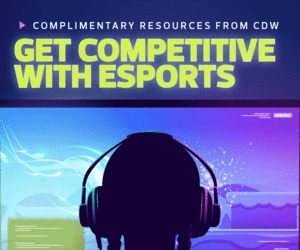On-Campus Partnerships to Support Scholastic Esports
There are already partners walking your hallways whose experiences you can lean on to grow your program. These internal stakeholders can help you get up and running, preparing your team to play at a competitive level, even before you need to engage with the community.
Athletic Directors
If anyone knows how to move students around, set up competitions and create schedules, it’s K–12 athletic directors. Having a conversation with your athletic director before you kick off your program can help you understand the competitive landscape, the schools and districts that are rivals, and potential matchups for your team.
A district athletic director can get you in touch with other schools and districts that may be open to competing with your team. An athletic director can also help you navigate the different departments that will need to be involved at the district level. More important, they can help lead the charge to have your esports team recognized alongside more traditional sports teams.
Faculty Stakeholders
Many faculty members may have roles that are a natural fit for esports partnerships. For example, some members in your district are experts at dealing with supplementary budgets, unique supplies and specialized equipment for their programs. Not only can they be a great resource as you navigate those conversations for the first time, but often they can mutually benefit from having their work connected to an esports program.
Curriculum directors and subject area experts — particularly those in science, technology, engineering and math — can provide guidance on connecting esports to existing curricula and instructional programs. Career and technical education directors may have suitable programs for esports athletes to consider as well, such as game development, digital design or broadcasting. Media specialists, who are often adept with technology strategies such as streaming and broadcasting, can work with students on improving those skills for the benefit of the program.










![[title]Connect IT: Bridging the Gap Between Education and Technology](http://www.edtechmagazine.com/k12/sites/default/files/articles/2014/05/connectit.jpg)




